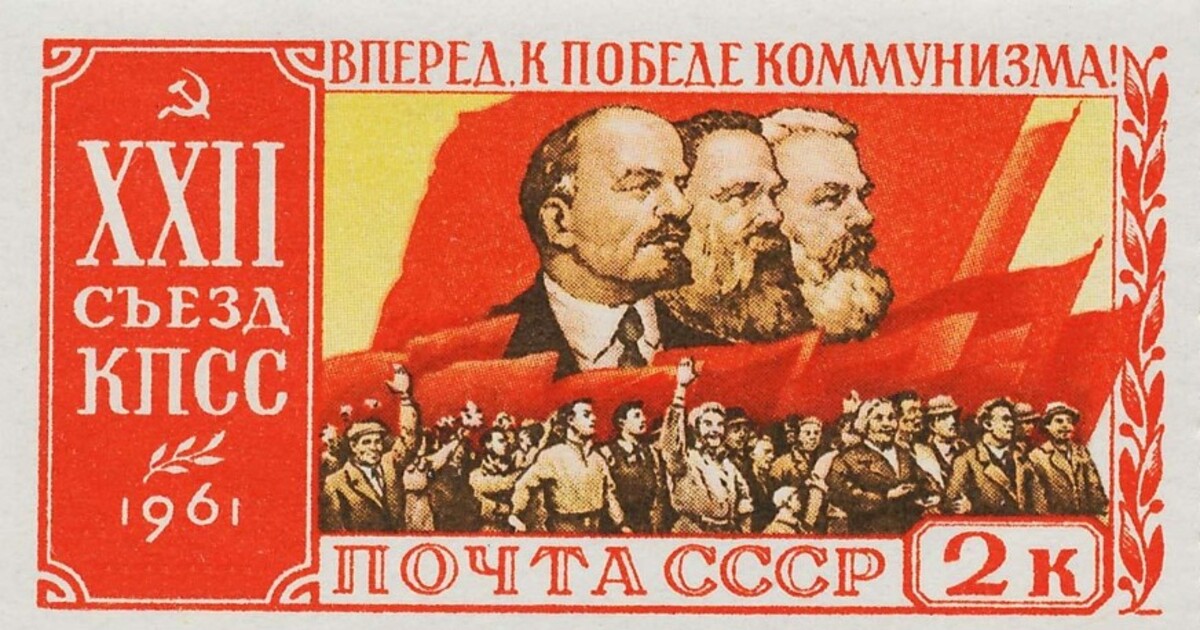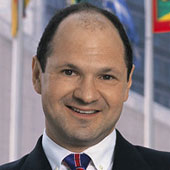When Russia Was Still Europe-Minded
Even in Communist times, during Putin’s much-beloved Soviet Union, Russian leaders deeply appreciated Europeans as true inspirations — as a quick look at any Matryoshka doll documents.
August 22, 2025

A Strategic Assessment Memo (SAM) from the Global Ideas Center
You may quote from this text, provided you mention the name of the author and reference it as a new Strategic Assessment Memo (SAM) published by the Global Ideas Center in Berlin on The Globalist.
Since the recent summit meeting between Vladimir Putin and Donald Trump in Alaska, Russian propagandists have started to warm up to the United States once more.
Definitely not another stage of Russia’s western orientation
The Russians are even touting a possible transatlantic alliance, leaping over much of Europe and connecting them in spirit directly to the United States. As is well-known, Putin fully shares Trump’s disdain for European-style democracy.
As a matter of fact, today’s Russia is further from Europe than it has been since the time of Peter the Great.
The geographic evidence
Russia is by far the largest country in Europe, although 77% of its territory lies in Asia. When it comes to the distribution of the population, the proportions are exactly reversed: 77% of Russian citizens live in Europe, which is where its largest cities are located.
As its national emblem, the two-headed eagle, would suggest, Russia straddles the two continents. But instead of bringing them together, Russia has always exhibited a split political personality disorder, sometimes turning eastward and other times westward.
Russia’s “Peter principle”: The reformer
Early in the 18th century, Tsar Peter founded Russia’s new capital, St. Petersburg, at the westernmost edge of his giant empire. He “cut a window onto Europe,” to quote poet Alexander Pushkin.
Not only did Peter invite Italian architects and artists to create a European capital, as well as other European professionals to ply their trade in Russia.
He also built a modern European army and navy, with which he was able to defeat the leading European nation of the time, the Kingdom of Sweden.
The failed effort to “de-Mongolize” Russia
Peter worked hard to turn Russia, which at the time had more in common with the Mongols who had dominated Muscovy for more than two centuries, into a European nation. The Russian flag, the tricolor of white, blue and red, was “borrowed” from the Dutch, whom he greatly admired.
However, his Europeanizing reforms were effected by force. He imported none of the democratic practices which already prevailed in the Netherlands and England. He retained the despotic, Asia-style monarchy with no limits on its power or system of checks and balances.
Under the rule of Putin, as evidenced by his ruthless and crude mechanisms of brutal rule at home, Russia is back with full force to re-Mongolize itself.
Russia’s high point of Europeanization
The high point of Russia’s Europeanization was reached in 1917, when the medieval Russian monarchy was finally overthrown and, for a brief moment, a democratic republic was proclaimed.
But then, Vladimir Lenin, returning from years of exile in various European cities, took power. With an iron and murderous fist, Lenin reshaped Russia based on the theories of Marx and Engels, two Germans who lived and worked in England.
As they established the world’s first communist state, Lenin’s Bolsheviks claimed that underdeveloped Russia, where nearly 80% of the population were illiterate peasants, had leapfrogged advanced European nations.
Consequently, it would now lead industrial Europe, as well as the rest of the world, to the inevitable communist future.
Moscow-in-Asia
At the same time, however, Lenin moved Russia’s capital from St. Petersburg back to Moscow, away from Europe and closer to Asia.
Meanwhile, St. Petersburg, the German or Dutch-sounding name honoring Christ’s favorite apostle, was renamed Leningrad, getting rid of all those European connotations.
Even failing at revolution
Instead of leading the world revolution, as Marx and Engels had prescribed, Russia closed its borders and slammed down the Iron Curtain.
Not only was travel to and from Russia severely limited, but the Soviet government resisted the flow of information as well. They evidently feared that decadent, i.e., non-Marxian or Englelsian European ideas would pollute the pure Russian soul.
Russia trying to become a European democracy, take two
When the Soviet Union collapsed in 1991, Russia tried to become a European democracy for a second time. It held free and fair elections, opened its borders and joined various multilateral organizations. Leningrad became St. Petersburg once more. This time democracy lasted for a decade.
And yet again, St. Petersburg played a key role in the retreat from Europe when it inevitably came at the start of the 21st century. Born in Leningrad, Vladimir Putin was chosen from complete obscurity by Russia’s first democratically elected president Boris Yeltsin as his successor.
Putin, Russia’s determined de-Europeanizer
Much like Lenin, Putin spent important years of his career in Europe, in the current Russian autocrat’s case serving as a KGB officer in East Germany.
Putin’s East German experience should have made him a great Westernizer, but he not only turned Russia once again away from Europe, but pushed it deeper into Asia than ever before.
Putin, big-time strategic blunderer
Ironically, Putin’s turn to Asia came largely as a result of his attempt to conquer Ukraine and move Russia’s influence deeper into Europe.
The full-scale invasion was not the cakewalk he had expected. In a big-time miscalculation for a supposed super-seasoned intelligence officer, Putin had not figured that European nations would lend their full support to Ukraine, sustaining its war effort and imposing strict sanctions on Russia.
European Russia increasingly under well-deserved attack
Now, three and a half years into the war, Ukrainian drone attacks on oil refineries, factories and infrastructure all over European Russia are making it more and more reliant on production facilities beyond the Urals, on its Asian territories.
As trade with the European Union dried up, Russia has exposed itself to a commercial disaster, losing its highly profitable markets for its oil, natural gas and other resources in Europe. It has replaced this market with sales to China and India at sharply lower prices.
China to the rescue?
Meanwhile, consumer goods, automobiles, industrial inputs and other products, previously imported from Europe, are now flowing in from China.
Since China has little competition in the Russian market, they cost much more. Some analysts in Russia complain about their country becoming too heavily dependent on its giant eastern neighbor. It is an incredible let-down, considering that Russia was once the economically absolutely superior nation.
Takeaways
Even in Communist times, during Putin’s much-beloved Soviet Union, Russian leaders deeply appreciated Europeans as true inspirations — as a quick look at any Matryoshka doll documents.
Russia has always exhibited a split political personality disorder, sometimes turning eastward and other times westward.
Under the rule of Putin, as evidenced by his ruthless and crude mechanisms of brutal rule at home, Russia is back with full force to re-Mongolize itself.
The high point of Russia’s Europeanization was reached in 1917, when the medieval Russian monarchy was finally overthrown and, for a brief moment, a democratic republic was proclaimed.
With an iron and murderous fist, Lenin reshaped Russia based on the theories of Marx and Engels, two Germans who lived and worked in England.
Lenin moved Russia’s capital from St. Petersburg back to Moscow, away from Europe and closer to Asia.
When the Soviet Union collapsed in 1991, Russia tried to become a European democracy for a second time. This time democracy lasted for a decade.
Much like Lenin, Putin spent important years of his career in Europe, in the current Russian autocrat’s case serving as a KGB officer in East Germany.
Putin’s East German experience should have made him a great Westernizer, but he not only turned Russia once again away from Europe but pushed it deeper into Asia than ever before.
Russia has exposed itself to a commercial disaster, losing its highly profitable markets for its oil, natural gas and other resources in Europe. It has replaced this market with sales to China and India at sharply lower prices.
A Strategic Assessment Memo (SAM) from the Global Ideas Center
You may quote from this text, provided you mention the name of the author and reference it as a new Strategic Assessment Memo (SAM) published by the Global Ideas Center in Berlin on The Globalist.


